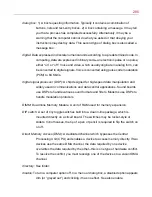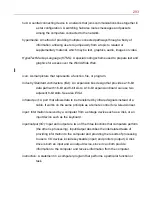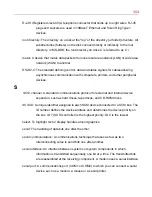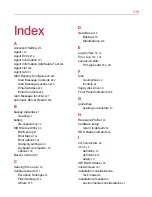
300
path (full path): The unique identifier for a file consisting of the file name preceded by the
drive, the top-level directory or folder and any lower-level directories or folders.
peripheral devices: Computer devices other than the CPU and memory. A peripheral
device may be internal (inside the case), or external (outside the case).
Peripheral Component Interface (PCI): A local bus that provides a high-speed data path
between the CPU and up to 10 peripheral devices. It supports both
multiplexing and the Plug and Play standard. In a Pentium PC, there is
generally a mix of PCI and ISA expansion slots or PCI and EISA expansion
slots.
pixel: A picture element. The smallest dot that can be produced on a screen or printer.
Plug and Play: A design standard that hardware manufacturers use to produce devices
that can be configured automatically (provided you use Windows 95 or
Windows 98).
pointing device: Any device, such as a mouse or trackball, that enables you to move the
cursor on the screen.
port: A socket on the computer where you plug in a cable for connection to a network or
a peripheral device. It provides the electrical connection through which the
computer sends and receives information. Standard ports include parallel and
serial ports.
power on features: Features the server updates whenever it is turned on, such as date,
time and the Num Lock key state.
Power On Self Test (POST): A set of routines that are stored in ROM and performed
when you start or reset a computer. They test system components such as the
processor(s), memory, disk drives, mouse and keyboard to make sure they are
connected and working correctly.
power up: To turn on a computer, or any peripheral device that has its own power supply.
processor: See central processing unit.
Summary of Contents for 3200
Page 1: ... ...
Page 309: ...309 ...













































